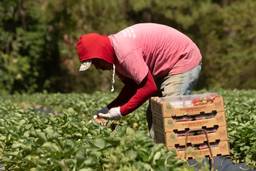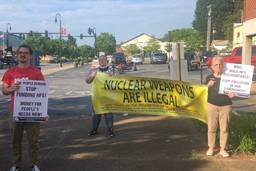‘Buy It or Else’: How Monsanto and BASF Forced a Toxic Weed Killer on Farmers
Internal records show the companies knew crop damage from their weed killer would be extensive. They sold it anyway.
Johnathan Hettinger Midwest Center for Investigative Reporting
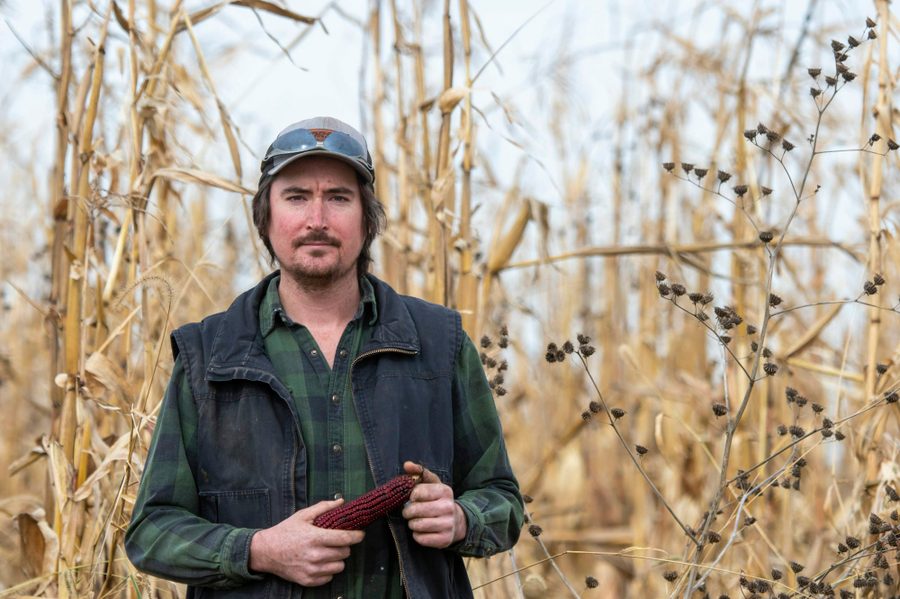
Editor’s Note: This story was originally published on the Midwest Center for Investigative Reporting and was supported with a grant from the Fund for Investigative Journalism.
Get poisoned or get on board.
That’s the choice soybean farmers such as Will Glazik face. The past few summers, farmers near Glazik’s central Illinois farm have sprayed so much of the weed killer dicamba at the same time that it has polluted the air for hours and sometimes days.
As Glazik puts it, there are two types of soybeans: Monsanto’s, which are genetically engineered to withstand dicamba, and everyone else’s.
Glazik’s soybeans have been the damaged ones. His soybean leaves will curl up, then the plants will become smaller and weaker. He’s lost as much as 40 bushels an acre in some fields, a huge loss when organic soybeans are $20 a bushel. He has to hold his breath every year to see if the damage will cause him to lose his organic certification.
His neighbors who spray dicamba are frustrated with him, he said. There’s an easy solution to avoid damage, they tell him: Buy Monsanto’s seeds.
This reality is what Monsanto was counting on when it launched dicamba-tolerant crops, an investigation by the Midwest Center for Investigative Reporting found.
Monsanto’s new system was supposed to be the future of farming, providing farmers with a suite of seeds and chemicals that could combat more and more weeds that were becoming harder to kill.
Instead, the system’s rollout has led to millions of acres of crop damage across the Midwest and South; widespread tree death in many rural communities, state parks and nature preserves; and an unprecedented level of strife in the farming world.
Executives from Monsanto and BASF, a German chemical company that worked with Monsanto to launch the system, knew their dicamba weed killers would cause large-scale damage to fields across the United States but decided to push them on unsuspecting farmers anyway, in a bid to corner the soybean and cotton markets.
Monsanto and BASF have denied for years that dicamba is responsible for damage, blaming farmers making illegal applications, weather events and disease. The companies insist that when applied according to the label, dicamba stays on target and is an effective tool for farmers.
Over the past year, the Midwest Center reviewed thousands of pages of government and internal company documents released through lawsuits, sat in the courtroom for weeks of deliberation, interviewed farmers affected by dicamba and weed scientists dealing with the issue up close. This story provides the most comprehensive picture of what Monsanto and BASF knew about dicamba’s propensity to harm farmers’ livelihoods and the environment before releasing the weed killer.
The investigation found:
- Monsanto and BASF released their products knowing that dicamba would cause widespread damage to soybean and cotton crops that weren’t resistant to dicamba. They used “protection from your neighbors” as a way to sell more of their products. In doing so, the companies ignored years of warnings from independent academics, specialty crop growers and their own employees.
- Monsanto limited testing that could potentially delay or deny regulatory approval of dicamba. For years, Monsanto struggled to keep dicamba from drifting in its own tests. In regulatory tests submitted to the EPA, the company sprayed the product in locations and under weather conditions that did not mirror how farmers would actually spray it. Midway through the approval process, with the EPA paying close attention, the company decided to stop its researchers from conducting tests.
- Even after submitting data that the EPA used to approve dicamba in 2016, Monsanto scientists knew that many questions remained. The company’s own research showed dicamba mixed with other herbicides was more likely to cause damage. The company also prevented independent scientists from conducting their own tests and declined to pay for studies that would potentially give them more information about dicamba’s real-world impact.
- Although advertised as helping out customers, the companies’ investigations of drift incidents were designed to limit their liability, find other reasons for the damage and never end with payouts to farmers. For example, BASF told pesticide applicators that sometimes it is not safe to spray even if following the label to the letter, placing liability squarely on the applicators.
- The two companies were in lockstep for years. Executives from Monsanto and BASF met at least 19 times from 2010 on to focus on the dicamba-tolerant cropping system, including working together on the development of the technology, achieving regulatory approval for the crops and herbicides and the commercialization of crops.
Monsanto released seeds resistant to dicamba in 2015 and 2016 without an accompanying weed killer, knowing that off-label spraying of dicamba, which is illegal, would be “rampant.” At the same time, BASF ramped up production of older versions of dicamba that were illegal to apply to the crops and made tens of millions of dollars selling the older versions, which were more likely to cause move off of where they were applied.
Bayer, which bought Monsanto in 2018, refused to grant an interview with the Midwest Center. Company officials did not respond to requests for comment, instead issuing a statement.
Spokesman Kyel Richard said the company “has seen an outpouring of support from grower organizations and our customers.”
“We continue to stand with the thousands of farmers who rely on this technology as part of their integrated weed management program,” Richard said.
BASF also did not respond to requests for comment, instead issuing a statement.
BASF spokeswoman Odessa Patricia Hines said that the company’s version of dicamba has “different physical properties and compositions” than Monsanto’s. Hines said the company is continuing to improve its dicamba technology.
A federal court banned the herbicide earlier this year, but the EPA reinstated dicamba for five more years in October.
Earlier this year, a federal jury sided with a Missouri peach farmer who sued the companies for driving his orchard out of business. The jury awarded Bill Bader $15 million for his losses and $250 million in punitive damages designed to punish Bayer. Bayer and BASF are appealing the verdict. The punitive damages were later reduced to $60 million.

Hines of BASF pointed out that in the Missouri trial: “The jury’s verdict found that only Monsanto’s conduct warranted punitive damages.”
Following the trial, Bayer announced a $400 million settlement with farmers harmed by dicamba, including $300 million to soybean farmers. Bayer said they expect BASF to pay for part of the settlement.
An attorney for Bader called the companies’ conduct “a conspiracy to create an ecological disaster in order to increase their profits” in court filings. The case largely revolved around showing the companies knew dicamba would harm thousands of farmers.
According to court exhibits, in October 2015, Monsanto projected it would receive nearly 2,800 complaints from farmers during the 2017 growing season, a figure based on one-in-10 farmers having a complaint.
However, even one Monsanto executive knew these projections might be low, according to court records. In late August 2016, Boyd Carey, a Ph.D. crop scientist overseeing the claims process for Monsanto, realized it might be more like one-in-five and asked for a budget increase from $2.4 million to $6.5 million to investigate claims. Carey testified that he was awarded the increase.
The projected number of complaints rose to more than 3,200 for 2018, before going down. After 2018, Monsanto figured that fewer farmers would be harmed because more farmers would switch to Monsanto’s crops to avoid being damaged, Carey testified in the Bader trial.
Dicamba affects all parts of Glazik’s operation. He grows organic soybeans to avoid exposure to toxic pesticides. He also likes the higher premiums and the improved soil quality. But with dicamba in the air, he’s less likely to be successful.
He now has to plant his soybeans later each year. Soybeans are less likely to be severely damaged when they’re small, and planting them later than usual means they’ll be smaller when the inevitable cloud of weed killer envelops his crops. Later planting typically means a bit of yield loss. It also means a later harvest, which limits planting of cover crops Glazik uses to improve his soil.
“All crop damage aside,” he said, the weed killer is everywhere. Oaks, hickories and other trees are damaged near his farm, both in the country and in town, he said. “The fact is that the chemical can volatilize and move with the wind and in the air. We’re breathing it.”
A ‘potential disaster’
For two decades, Monsanto made billions of dollars with Roundup Ready crops, which had been genetically engineered to withstand being sprayed by the weed killer and adopted by nearly every American soybean farmer. But by the mid-to-late 2000s, Roundup was starting to fail. Farmer’s fields were overwhelmed with “superweeds” that had developed resistance to Roundup’s active ingredient, glyphosate.
In response, Monsanto developed new soybean and cotton seeds that were genetically engineered to withstand being sprayed by both glyphosate and dicamba, a very effective weed killer used since the 1960s. It was also touted as the company’s largest biotechnology rollout in company history. In just three years, Monsanto’s dicamba-tolerant system was able to capture up to three-fourths of total soybean acreage, an area the size of Michigan.
Dicamba was not widely used during the growing season because of its propensity to move off-target and harm other plants. Because of its limited use, fewer weeds were resistant to it, making it an effective replacement for Roundup. Monsanto even dubbed the crops as its money-maker’s next generation, calling them Roundup Ready 2 Xtend.
But the company faced a problem with dicamba: The weed killer drifted onto non-resistant plants, some as far as miles away. In its own testing over the years, Monsanto had accidentally harmed its own crops dozens of times.
As far back as 2009, Monsanto and BASF received warnings about dicamba from several sources — one company called it a “potential disaster,” according to court records — but they decided to plow ahead anyway.
“DON’T DO IT; expect lawsuits,” wrote one Monsanto employee, summarizing academic surveys the company commissioned about dicamba’s use.
In order to commercialize dicamba, both Monsanto and BASF worked to develop new formulations with low volatility.
Off-target movement from dicamba can happen in two main ways: drift and volatilization. Drift is when the chemical’s particles move off the field when they are sprayed, generally by wind in the seconds or minutes after it is applied. Volatilization is when dicamba particles turn from a liquid to a gas in the hours or days after the herbicide is applied.
Damage from volatilization frequently occurs through a process called “atmospheric loading,” which is when so much dicamba is sprayed at the same time that it is unable to dissipate and persists in the air for hours or days poisoning whatever it comes into contact with.
Volatilization is particularly concerning because dicamba can move for miles and harm non-target crops, especially soybeans, and even lawns and gardens. Tomatoes, grapes and other specialty crops are also at-risk of being damaged.
Despite being touted as less volatile, the new versions — Monsanto’s XtendiMax with VaporGrip Technology and BASF’s Engenia — were unable to stop the movement entirely.
During its 2012-2014 testing of an older version of XtendiMax, Monsanto had at least 73 off-target incidents, according to court documents.
In 2014, Monsanto had significant dicamba damage at a training facility in Portageville, Mo. Even in its own promotional videos, Monsanto couldn’t prevent non-dicamba tolerant soybeans from showing symptoms of damage.
The EPA took note of an incident where, through volatilization, dicamba turned into a gas and apparently floated more than 2 miles away, much farther than it was supposed to. During that incident, no one had measured how badly the crops had been damaged and the EPA was unable to definitively determine the symptoms were caused by dicamba. The EPA decided that was an “uncertainty” and approved the use of the weed killer with a 110-foot buffer zone.
In 2015, knowing the EPA was keeping an eye on off-target movement, Monsanto decided to halt all testing of XtendiMax with VaporGrip Technology. According to court records, it kept its own employees, who were interested in developing recommendations for farmers, from testing, and it limited trials by independent academics in order to maintain a “clean slate.” It asked BASF to halt its dicamba testing as well.
When a weed science professor at the University of Arkansas asked Monsanto for a little bit of Xtendimax to test its volatility, the company told him it would have difficulty producing enough dicamba for both him and its independent tests.
A Monsanto employee, who worked at the company for 35 years, didn’t think much of that explanation when he forwarded the email to a colleague.
“Hahaha difficulty in producing enough product for field testing,” he wrote. “Hahaha bullshit.”
Illegal spraying a ‘ticking time bomb’
Weeds cut into farmers’ profits. With low profit margins, farmers will use any tool they can to control weeds.
Monsanto recognized this in 2015 and 2016 when they released dicamba-tolerant crops without their new versions of dicamba. An internal Monsanto slide shows the company knew that many farmers would likely illegally spray older, more volatile versions and harm other farmers’ crops.
But the company decided the benefits of establishing a market share outweighed the risks and launched the cotton crops in 2015. The EPA allowed farmers to spray other weed killers on the crops, and Monsanto decided to launch the seeds with “a robust communication plan that dicamba cannot be used.”
When the seeds were sold, Monsanto put a pink sticker on each bag to indicate it was illegal to spray dicamba on the crops in 2015. The company also sent letters to all growers and retailers, among other tactics, to limit illegal applications of dicamba.
However, in internal communications in April 2015, members of Monsanto’s cotton team joked about this risky strategy.
“One sticker is going to keep us out of jail,” one wrote.
In Oct. 2015, a BASF employee reported hearing that growers sprayed older versions of dicamba on the cotton that year.
Monsanto doubled down on this risky strategy in 2016, releasing dicamba-tolerant soybean crops without a weed killer, too. Meanwhile, Monsanto also declined to investigate drift incidents in 2015 and 2016.
At a February 2016 meeting in Puerto Rico, a BASF executive expressed concerns to Monsanto that the “widespread” illegal spraying would likely become “rampant” due to the decision.
BASF also benefited from Monsanto’s decision. The company’s sales of older versions of dicamba spiked in 2016. Retailers sold $100 million worth of its older versions of the weed killer, compared to about $60 million annually in 2014 and 2015, according to internal documents. BASF documents indicated the sales increased because of dicamba-tolerant seeds.
In the summer of 2016, BASF sales representatives in the field were reporting older versions of dicamba causing damage, hinting the problem was predictable.
“The one thing most acres of beans have in common is dicamba damage. There must be a huge cloud of dicamba blanketing the Missouri Bootheel,” a BASF employee wrote in a July 4, 2016, report. “That ticking time bomb finally exploded.”
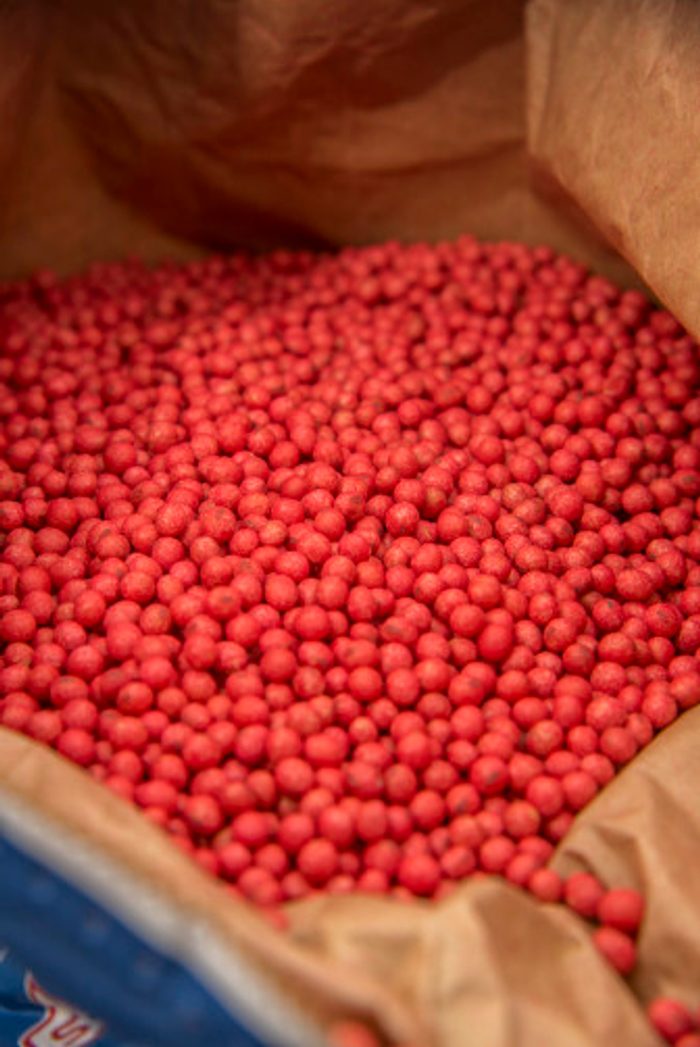
Drift expected to drive sales
Dicamba drift led to widespread news coverage. Monsanto and BASF expected to turn it all into more money.
In an internal document, Monsanto told its sales teams to target growers that weren’t interested in dicamba and dicamba-resistant crops. The sales pitch? Purchasing Monsanto’s products would protect them from their neighbors.
In April 2017, a market research document prepared by Bank of America found many farmers were doing just that.
“Interesting assessment that much of the Xtend acreage was planted to protect themselves from neighbors who might be using dicamba? Gotta admit I would not have expected this in a market research document,” a Monsanto executive wrote.
In internal slides from a September 2016 meeting, BASF identified “defensive planting” as a potential market opportunity. BASF also had a market research document that found defensive planting was driving sales.
However, a “tough questions” memo distributed to BASF employees in November 2017 told employees the opposite: “We have not considered ‘defensive planting’ in our sales projections.”
Even as thousands of farms across millions of acres of cropland were being damaged, Monsanto officials were touting the damage as a sales opportunity.
“I think we can significantly grow business and have a positive effect on the outcome of 2017 if we reach out to all the driftee people,” another Monsanto sales employee wrote in an email that year.
One of those customers was Bill Bader, the peach farmer who sued Monsanto for destroying his orchard. Bader testified that while he could not protect his peach trees, in 2019 he planted dicamba-tolerant soybeans to help protect his soybean crops from getting damaged.
“This is the first product in American history that literally destroys the competition,” Bader’s attorney, Billy Randles, said. “You buy it or else.”
Research designed to downplay harm
For years, the EPA told Monsanto it needed to address volatility in its dicamba studies when applying for regulatory approval. But the tests Monsanto conducted did not reflect real-world conditions.
Dicamba would primarily be sprayed on soybeans, but 2015 studies submitted to the EPA were conducted at a cotton field in Texas and a dirt field in Georgia. Neither state has a large amount of soybeans. This guidance followed directives from Monsanto lobbyists that incorporated earlier Monsanto research showing that higher volatility was detected on fields with soybeans.
In addition, Monsanto did not follow the rules that would eventually be codified on the label.
During the testing in Texas, wind speeds were 1.9 to 4.9 miles per hour. In Georgia, wind speeds were 1.5 to 3 miles per hour. According to the label the EPA approved, dicamba can only be sprayed with wind speeds between 3 and 10 miles per hour. Spraying at low wind speeds is more likely to lead to volatilization because there is increased risk of a temperature inversion, which is when cooler air is caught beneath a layer of warmer air making gases more likely to persist near the ground.
After Monsanto submitted the tests to the EPA, the company still had a lot of unknowns about its product’s volatility, according to internal emails.
A Monsanto researcher wrote an email in February 2016 to his coworkers that underscored how little the company knew about the propensity of dicamba to damage crops.
“We don’t know how long a sensitive plant needs in a natural setting to show volatility damage. We don’t know what concentration in the air causes a response, either,” he wrote. “There is a big difference for plants exposed to dicamba vapor for 24 vs. 48 hours. Be careful using this externally.”
Despite the design of the studies, and the EPA’s own studies that showed dicamba posed a risk to 322 protected species of animals and plants, the agency conditionally approved the herbicide in 2016. The agency determined that mitigation measures — such as not spraying near specialty crops and endangered species habitats, wind speed restrictions, and a ban on aerial applications — would keep spray droplets on target.
It was only approved for two years, when the agency would review its approval again.
After the conditional approval, BASF knew dicamba still posed risks. While BASF told farmers dicamba drift wouldn’t hurt their bottom lines, the company privately told pesticide applicators that any drift they caused could decrease farmers’ harvests, according to internal BASF documents. A BASF executive said “from a practical standpoint” Engenia was not different from older dicamba versions.
Even Monsanto’s sales teams were having problems with dicamba’s reputation after the EPA approved the weed killer.
In an internal email, a Monsanto salesman took issue with BASF changing how it publicly discussed its dicamba product: It used to say volatility was not a problem, but now it said it was. Another chemical company saying volatility was bad could hurt Monsanto’s sales.
“We need to get on this right now!” the salesman emailed his colleagues. “Deny! Deny! DENY!”
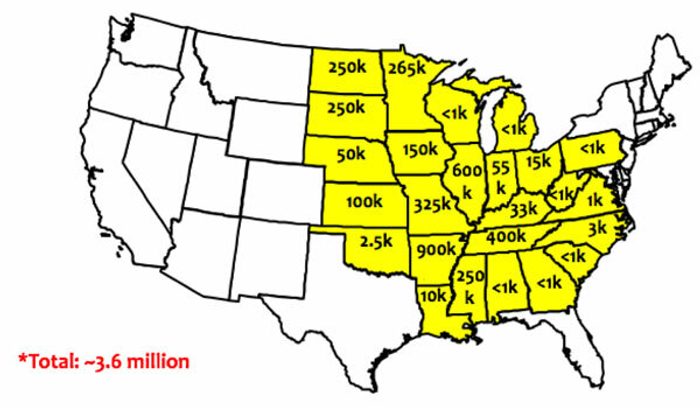
‘Never admit guilt’
In 2017, the first season that the new versions of dicamba were approved, damage reached unprecedented levels. Around 3.6 million acres of soybeans were damaged, according to an estimate from the University of Missouri.
In July of that year, Monsanto executives scheduled a meeting to discuss how to combat coverage of complaints.
“We need REAL scientific support for our product to counteract the supposition happening in the market today,” a Monsanto executive wrote in an email. “To be frank, dealers and growers are losing confidence in Xtendimax.”
In late summer 2017, Monsanto had started to blame damage on a BASF weed killer, which is used on the main competitor to Monsanto’s own soybeans. In December 2017, Monsanto agreed to drop that argument as part of a defense strategy with BASF against farmers.
Both Monsanto and BASF took steps to shield themselves from lawsuits.
The form Monsanto told its investigators to use when examining farmer complaints was “developed to gather data that could defend Monsanto,” according to an internal company presentation. Later, Monsanto said that 91% of applicators using the form self-reported errors in spraying dicamba.
A BASF executive also edited his company’s drift investigation Q&A.
“I was always told to never admit guilt,” he said.
On top of the investigations, the label left pesticide applicators liable for damage because it was nearly impossible to follow. A 2017 survey of applicators found that most trained sprayers had issues with dicamba even when spraying in good conditions and while following the label.
With damage being reported in 2017, Monsanto also declined to pursue a study that would have given the company more information about how dicamba caused damage on real farms. A Monsanto off-target movement researcher sent a request for a project proposal to Exponent, which helped analyze the data Monsanto submitted to the EPA. The study could be done in less than two weeks and cost $6,000.
The researcher forwarded the proposal to two Monsanto executives.
The company never acted on it, one testified in the trial.
‘The problems have not gone away’
In order to combat the damage, the EPA developed new restrictions on dicamba. In doing so, the EPA dropped an idea that Monsanto opposed, and Monsanto dictated the new restrictions that were adopted.
State officials warned the EPA the changes wouldn’t work. They were right. In 2018, at least 4.1 million acres were damaged, according to EPA documents.
Still, the EPA re-approved dicamba for the 2019 and 2020 growing seasons with new restrictions, some of which ignored agency scientists’ recommendations.
States also increasingly took measures into their own hands, implementing spraying cut-off dates and temperature restrictions.
The damage continued. Illinois, the nation’s largest soybean producing state, had more complaints than ever in 2019. Iowa had “landscape level” damage in 2020.
Aaron Hager, an associate professor of weed science at the University of Illinois, said it is clear the changes haven’t worked.
“We have revised the label and revised it again,” Hager said. “The problems have not gone away.”
The EPA’s decision was eventually voided by the Ninth Circuit Court of Appeals for failing to properly consider the impacts on farmers and the environment. The court ruled the agency gave too much deference to Bayer and also was lacking necessary data to show too much harm wouldn’t be done.
Dicamba was recently reapproved, and Bayer continues to invest in it. The company will release new soybean seeds designed to be resistant to dicamba and glufosinate, another BASF herbicide, to fill 20 million acres in 2021. The company also continues to work toward approval of other seeds that are resistant to dicamba and other herbicides.
Glazik, the organic Illinois soybean farmer, works as a crops consultant advising other farmers on what to plant. As the damage has continued, he said, more and more of his clients are “feeling bullied into” buying the dicamba-tolerant crops. Others tell him, they have to spray dicamba or else they can’t control the weeds.
But as an organic farmer, Glazik said, no single herbicide is necessary. Instead, farmers have a choice. Well-managed fields can be weed-free without using toxic chemicals, he said.
“You don’t have to have the dicamba spray to control weeds in a field,” he said.
Johnathan Hettinger is a journalist based in Central Illinois, where he grew up. A graduate of the University of Illinois, he has worked at the Midwest Center for Investigative Reporting, the Livingston Enterprise and the (Champaign-Urbana) News-Gazette. Contact Johnathan at jhett93@gmail.com and follow him on Twitter @jhett93.

